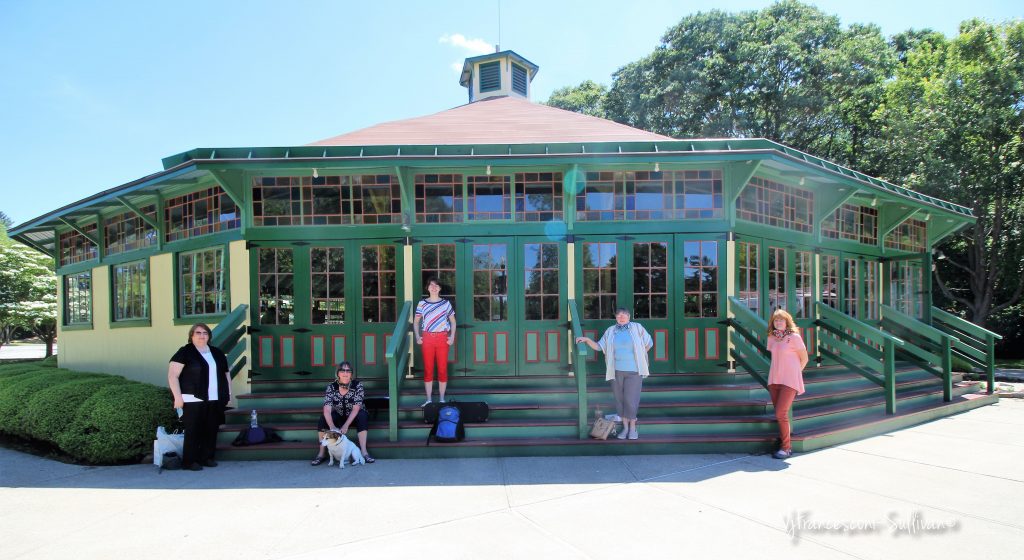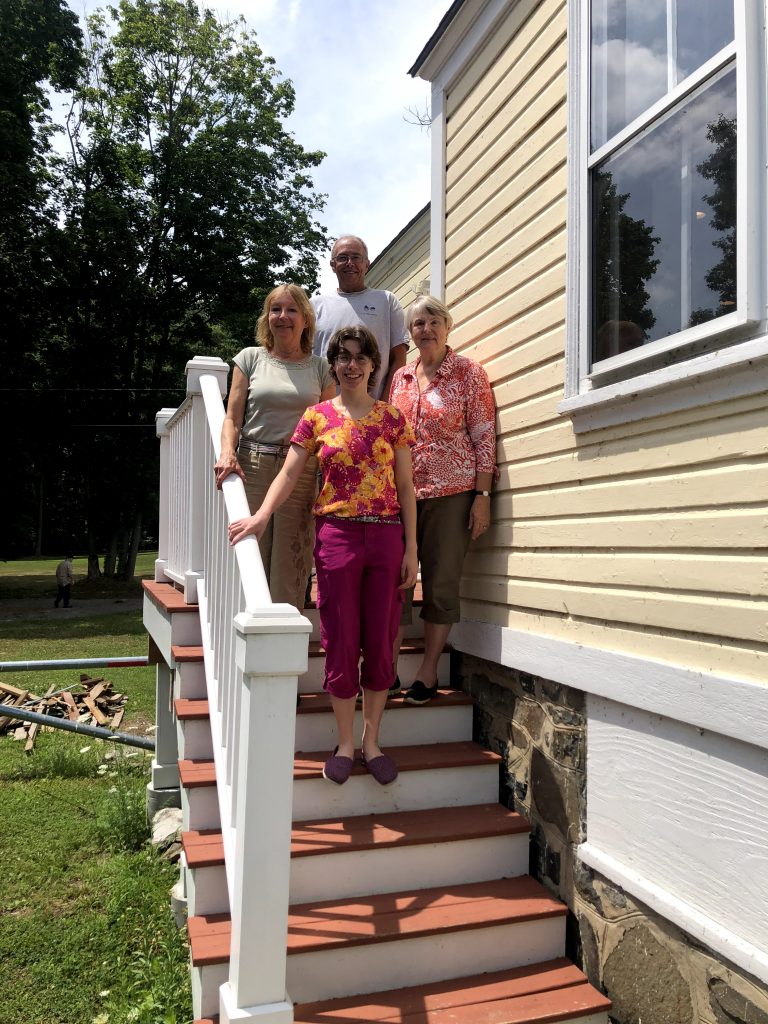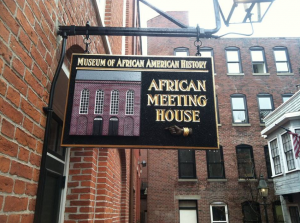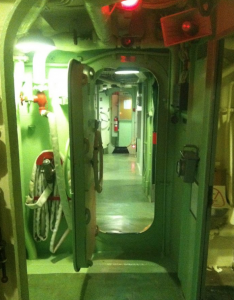Written by Abigail Epplett, M.A. student in Museum Education
If you’re a newly minted grad student or looking to join a program, you’re probably aware that many master’s and certificate programs require students to complete a practicum. What does this mean? Think of a practicum as an independent work-study class where you gain experience in your chosen field. In some ways, it is similar to an internship, but practicums may require classwork, depending on the program. The method of placement varies between disciplines. Since my area of expertise is in Museum Studies, I’m going to focus on this model of practicum.

What do you need? Who do you know? What can you do?
The first step to completing a practicum is finding an institution willing to host you. As I mentioned earlier, the method of placement varies between disciplines. Some departments place students in practicums. In Museum Studies, the student find their host institution on their own. As you can imagine, finding a host institution during the COVID-19 social distancing restrictions adds some challenges. Yikes! To make the process easier and less scary, try asking yourself these three questions: “What do I need?”, “Who do I know?”, and “What can I do?”.
Let’s start with the first question: What do you need? What is required for your practicum? Are there any limitations or deadlines to keep in mind? Each practicum lasts a certain number of hours and must be completed at a specific type of organization. For example, my practicum needed to last for at least 125 hours over the Summer 2020 session, and it needed to be held at a cultural institution. Due to the complications surrounding COVID-19, students in the Summer 2020 session could petition for extra time to complete their practicum. I did not need additional time, but it’s something to keep in mind if you are worried about getting your hours completed, especially if you already work a full-time job.
While the requirement to work at a cultural institution might initially seem pretty limiting, a wide range of organizations fall into this category. Working at a museum is an obvious choice, but during the Spring and Summer 2020, most museums were closing and furloughing staff. Visitors centers, university galleries, and museum-related businesses were likewise closed. What was I going to do?
This brings me to the second question: Who do you know? What are your connections to the industry? Who understands your potential? The idea of networking is frequently discussed in any academic setting, whether visiting a fair or workshop held by career services or learning from professors during class time and office hours. During COVID-19, I reached out to my network to find an organization to host my practicum and found a willing organization a few miles from my house: Blackstone Heritage Corridor, Inc. (BHC). This opportunity was so obvious that I nearly overlooked it. I had run or driven past the building that housed the BHC offices two or three times a day for most of my life, and had begun volunteering with BHC in January 2020, a mere four months before applying for a practicum there. This short amount of time was enough for them to see my potential and offer me a practicum opportunity.
Finally, we’ve come to the final question: What can I do? What talents make me stand out from other practicum-seeking students? How will I bring a unique skillset to the organization? If you are in the museum program, it’s a given that you know a lot about art, history, and education. Similarly, someone looking for a teaching practicum needs to know a lot about classroom management and pedagogy, while someone seeking a laboratory practicum understands scientific practices and research methods. But there are many skills outside of standard curriculum that are part of daily work and valuable to organizations. Do you design beautiful and engaging presentation slides? Are you great at troubleshooting problems with technology? Are you experienced in photography and video editing? These skills are important for any organization, especially cultural institutions with limited funding and small staffs, and will make you stand out to your potential host.
A Brief Note on Supervisors
A major component of the practicum is the onsite supervisor. This is an employee of the organization who will act as your mentor during your practicum. They make up your practicum “team”, which also includes you and your academic advisor. The supervisor has to fill out paperwork and attend at least one meeting with you and your advisor during your practicum. That being said, while it is not always possible to choose your supervisor, like when your department places you in a practicum, if you are required to find your own practicum, make sure your personality meshes with that of your supervisor. Try to meet them in person ahead of time before making a commitment. During my practicum at BHC, I worked with Suzanne, the Volunteer Coordinator, which was a great match. I had previously met Suzanne through volunteering at BHC, so I knew we would get along well.
Talk to Me, Baby

A less interesting title for this section might be, “Communication is key.” You’ve heard this throughout undergrad, high school, and even earlier, but this is still a difficult concept for some people, especially because there is such a range of communication methods and styles. On one end are people who view communication as a biweekly, five-minute phone call. On the other end are those who want frequent updates via email, text, and video chat. When these two people work together, chaos ensues.
Communicating with your supervisor is a major aspect of the practicum, especially when many practicums must happen remotely during COVID-19 restrictions. What helped me to communicate during my practicum was setting up a schedule of the entire practicum and sharing it with Suzanne. The schedule showed when we needed to have face-to-face meetings, whether they were over Zoom or in person, and what projects I needed to work on. I also sent regular updates on my projects and asked questions via email. Because we had agreed upon a schedule ahead of time, I never felt confused through lack of communication, even when the schedule inevitably changed.
Finally, Paperwork
The main difference that I found between a practicum and an internship was the classwork. The Museum Studies practicum comes with its own course on Tufts’ online course management site, Canvas, where students answer questions, complete self-evaluations, and submit a final paper. During my practicum, this component happened asynchronously, and I had no trouble completing the work, but it is one more thing to remember. Also, time spent completing classwork does not count toward your practicum hours, so you need to figure that into your schedule.
Your practicum supervisor also has to fill out a small amount of paperwork, mainly to verify that you are indeed working at the organization. This is where having a personality match with your supervisor is especially helpful: someone who enjoys working with you is much more likely to leave a glowing review than someone who dislikes you or is ambivalent about your existence.
Wrap It All Up
Ultimately, your practicum is intended to be an experience in the “real world” of your industry under the guidance of seasoned professionals and your academic advisor. It’s a great way to learn your likes and dislikes in the field, along with gaining new skills and making connections. Good luck finding the practicum that is perfect for you!



